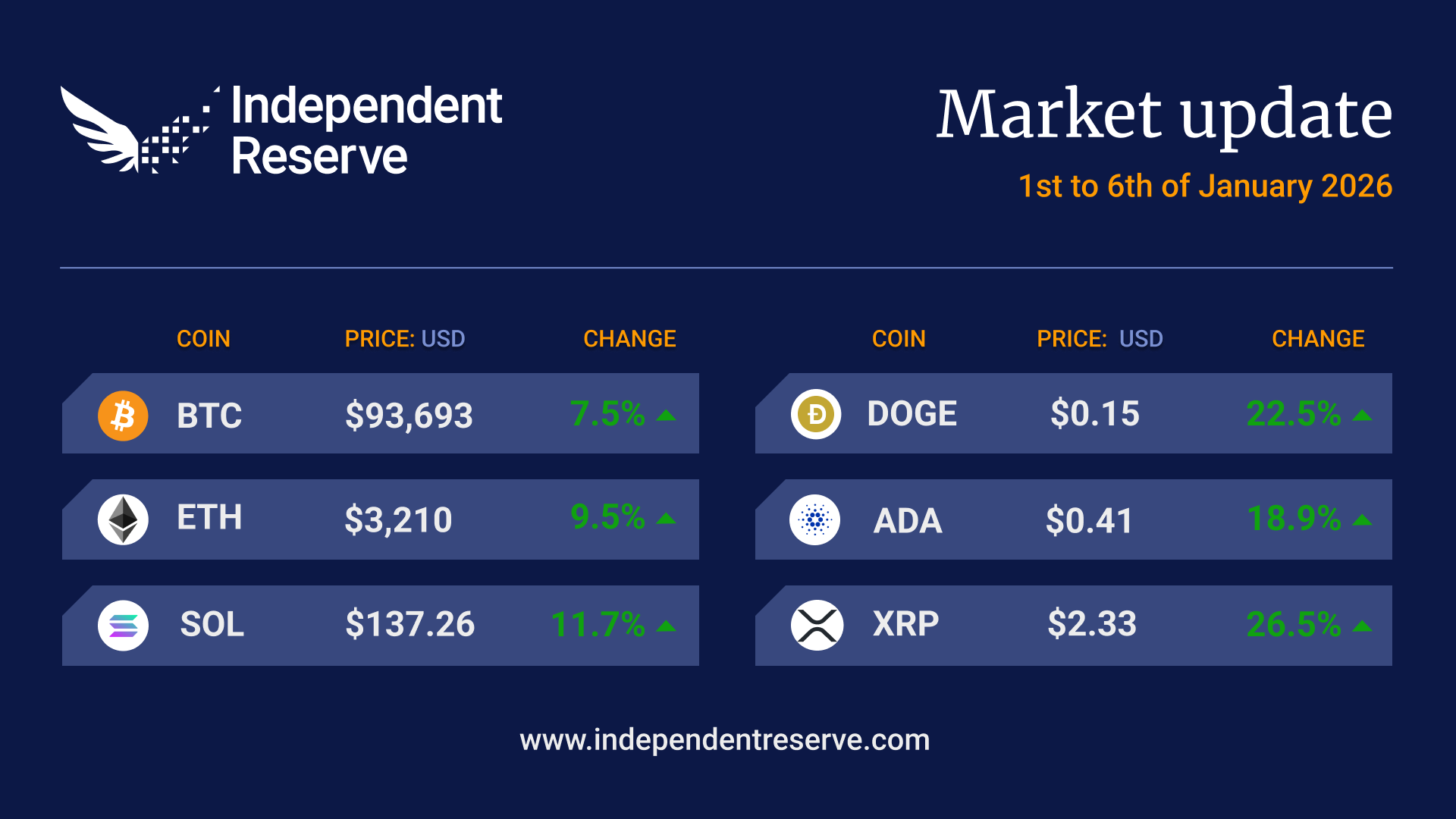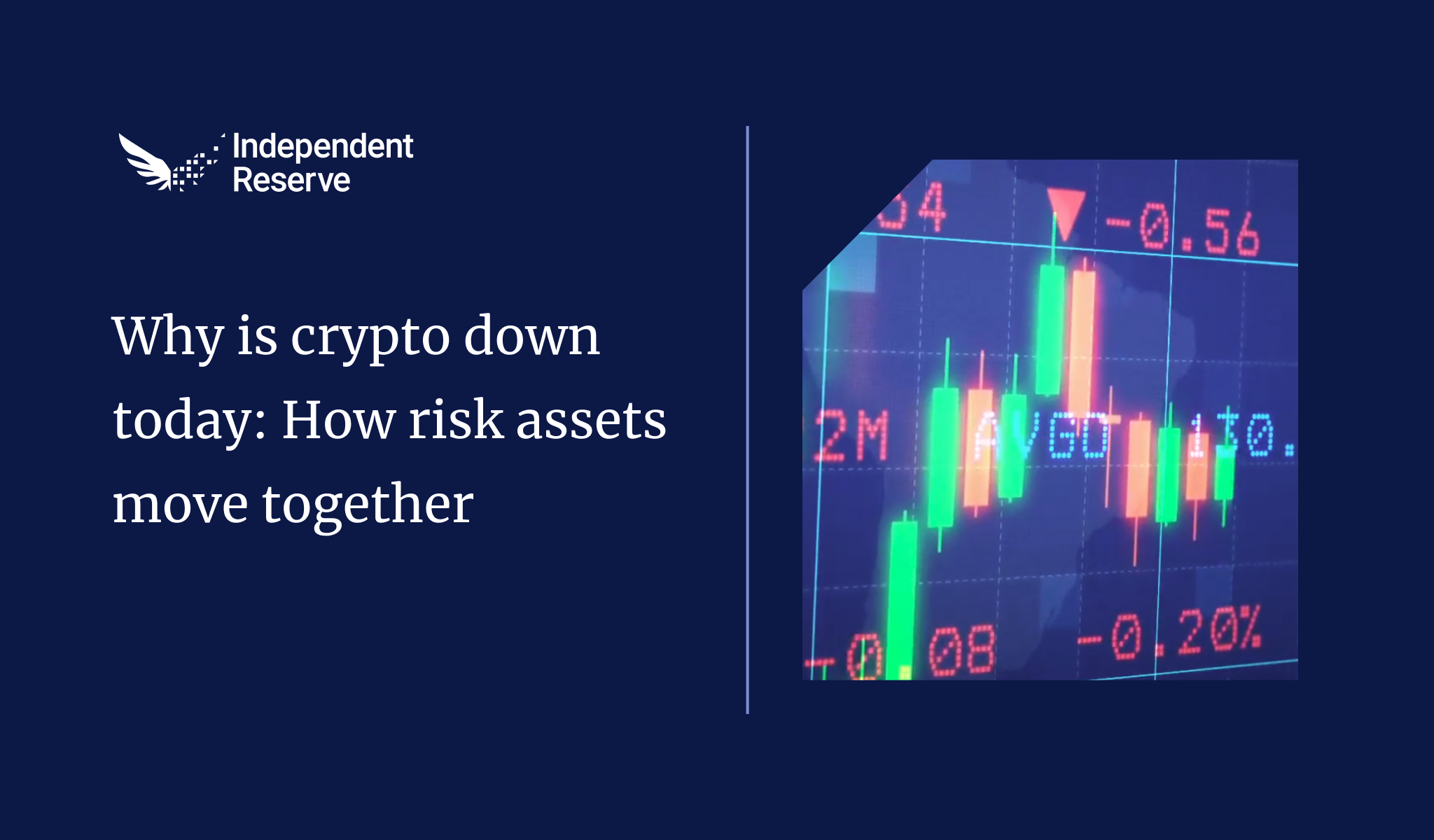In Markets
Bitcoin’s longest ever losing streak ended on Sunday with the cryptocurrency finally printing its first weekly green candle in 10 weeks. There’s now hope among traders that we’ve found the bottom and JPMorgan’s suggestion of a 30% upside for Bitcoin following the recent washout is right. However, Josh Olszewicz, head of research at Valkyrie Investments, thinks overall conditions aren’t favourable. “Uncertainty in the global economy due to high inflation and the likelihood we are in a recession, paired with the prevalence of central bankers raising rates, is likely going to force all assets downward at least through the end of the summer,” he said. The Reserve Bank of Australia is also widely expected to raise interest rates today. Bitcoin finished the week at AU$41,700 (US$29.9K) while Ethereum lost 11% to AU$2,450 (US$1,750). Cardano increased 1%, XRP fell 7%, Solana (-16%) and Polkadot was down 13%. The Crypto Fear and Greed Index is at 13, or Extreme Fear, up from 10 last week.

From the IR OTC Desk
The global macro-economic landscape remains the core driver of economic sentiment. To describe the current state of play, albeit somewhat counterintuitively, risk assets are exhibiting negative price correlation to positive economic data, and vice versa.
Macro-economic data continues to highlight high levels of inflation, historically low unemployment and overheating levels of aggregate demand – affording central banks with plenty of capacity to continue to tighten monetary policy. The broader question for assets, including digital assets remains: will central banks deliver rate hikes equivalent to what is currently priced into the bond market? Time will tell.
At their June monetary policy meeting, the Reserve Bank of Australia (RBA), today, increased interest rates by 50bps, to take the underlying cash rate to 0.85%. In the monetary policy statement, Governor Philip Lowe highlighted that “Given the current inflation pressures in the economy, and the still very low level of interest rates, the Board decided to move by 50 basis points today. The Board expects to take further steps in the process of normalising monetary conditions in Australia over the months ahead.” Expect domestic employment conditions and inflation to be the most crucial data events. Of significance this week, Friday, 10th of June will be Consumer Inflation Expectations, forecast to be delivered at 5% for June.
In the US, the Federal Open Market Committee (FOMC) is scheduled to meet on the 16th of June. Expectation is that they will again increase the target range for the federal funds rate by 50bps (current target remains 0.75% – 1.00%). At the May meeting, Chair Powell noted that the economy was in good shape to absorb further increases to the federal funds rate due to the strength of the labour market – and indicated that 50bp increases should likely be expected at the upcoming June and July FOMC meetings. This data dependency has proven critical to asset price movements, with the hope that a small hiccup in actual data, may lead to some backtracking of rate hikes from the Fed. So far, the data has remained robust.
Last week we received US employment data for May: Unemployment rate (May) at 3.6%, Non-Farm Payrolls (May) +390k, Average Hourly Earnings YoY (May) 5.2%. With the crucial US inflation data set to be delivered on Friday 10th of June, bond, equity and cryptocurrency markets alike will be paying incredibly close attention. The current forecast is for an increase in the Core Inflation Rate YoY (May) to +6.2% with the underlying inflation rate (May) remaining at 8.3%. Watch this space carefully.
On the OTC desk – the market has well and truly moved on from the UST/Luna collapse, although remains highly cautious. This is best represented by ETH/BTC which has tracked below 0.06. This sharp move lower in spread is a telling sign of market concern approaching the ETH ‘merge’, as well as a leading indicator of alt coin performance. Flow in USDT has been one way and continues to be skewed to the sell side. At the moment, the watch and wait approach has become the market norm – hopefully this won’t be for much longer.
For any trading needs, please don’t hesitate to get in touch.
In Headlines
New bill introduced
Republican senator Cynthia Lummis and Democratic senator Kirsten Gillibrand are due to introduce the Responsible Financial Innovation Act later today (June 7). The bill clarifies the roles of the SEC and CFTC in regards to crypto, it ensures that stablecoins have 100% backing, and clarifies that miners are not broker dealers. While Lummis is friendly to the crypto industry, she leans heavily towards Bitcoin, and supporters of other coins worry that the bill will see many altcoins branded securities and erode privacy.

Money printer reverses
The Federal Reserve’s money printer went into overdrive during the pandemic, doubling the balance sheet to US$8.95 trillion (AU$12.45). This inflated the prices of all assets, including crypto. The total market cap went from US$162B (AU$225B) in the March 2020 crash to over US$3 trillion (AU$3.85T) in November and is currently at US$1.275 trillion (AU$1.77T). Now the money printer is going in reverse with the Fed shrinking its balance sheet by US$47.5 billion (AU$66B) per month for the next three months and then it steps up to US$95B (AU$132B) per month. The effect this will have on crypto is unclear: many are calling for more downside, while deVere group CEO Nigel Green thinks markets overall have already priced it in.
Supply and demand to flow model
Fidelity’s director of global macro Jurrien Timmer always thought the stock to flow Bitcoin price model was a little simplistic, as it purely models the effect of halving supply reductions and doesn’t account for demand. So he’s modified it with two other models that track the S curve of adoption for the internet and mobile phones. He says the resulting Bitcoin Supply and Demand model has tracked the price more closely than S2F this halving: “If accurate, it suggests still robust but less pie-in-the-sky upside than before.” It suggests a price around US$63,800 (AU$88.8K) in 2025 though.

Source: Jurrien Timmer [Twitter]
Testnet merge June 8
The Ropsten testnet Merge will be the most significant trial of Ethereum’s move to proof of stake so far, and it’ll happen sometime on June 8. There are various Ethereum Community live streaming events you can join to stay up to date on how progress on the Merge is going. While the Merge is expected to be bullish for ETH, the macro conditions are making some projects nervous. There’s a proposal currently up at Lido DAO to sell 10,000 ETH from the treasury to cover operating expenses in case of a protracted bear market.
Surveys, surveys
A GOBankingRates survey of 1,037 Americans suggests that more than 57% of crypto investors have earned less than US$1,000 (AU$1,391) in all time profits. Meanwhile a survey by the University Institute of Public Opinion of the José Simeón Cañas Central American University found that 6.1% of Salvadorans believed the adoption of Bitcoin as legal tender in El Salvador brought a lot of benefits for them, some benefits (8.9%) or a few benefit (12.8%). That’s not a bad result actually, even though currency.com reported it as ‘Over 71% of Salvadorans say Bitcoin law has not benefited them.’
Singapore’s Project Guardian
The Monetary Authority of Singapore (MAS) has launched Project Guardian, a pilot for DeFi initiatives and digital asset tokenisation on the blockchain. Project Guardian will be done in collaboration with JPMorgan, DBS Bank, and MarketNode, a trading platform of the Singapore Exchange. According to MAS, lessons from Project Guardian will serve as a basis for informing policy markers on the regulatory guard rails that are required to utilise DeFi in Singapore while also mitigating its risks.

Bits and pieces
New York state senate approved a proof of work mining ban that prohibits new Bitcoin mines that don’t use green energy (or the expansion of existing mines). Experts worry this could create a domino effect across the US. NFTs could be classified as securities after Manhattan prosecutors charged a former product manager at OpenSea NFT marketplace with insider trader. He allegedly bought 45 NFTs with anon wallets from collections he knew were going to be featured on the home page, then sold them for a profit. CHOICE magazine’s submission to the Treasury’s consultation paper for crypto asset secondary service providers calls for a single definition of crypto for better regulation, a financial licence for exchanges, and for the industry to be bound by consumer protection laws. Solana was knocked offline for four hours mid-week due to a bug. It’s the fifth outage this year. Institutions are buying the dip, tipping US$126M (AU$175M) into publicly traded Bitcoin products last week and US$506M (AU$704M) so far this year.
Until next week, happy trading!


